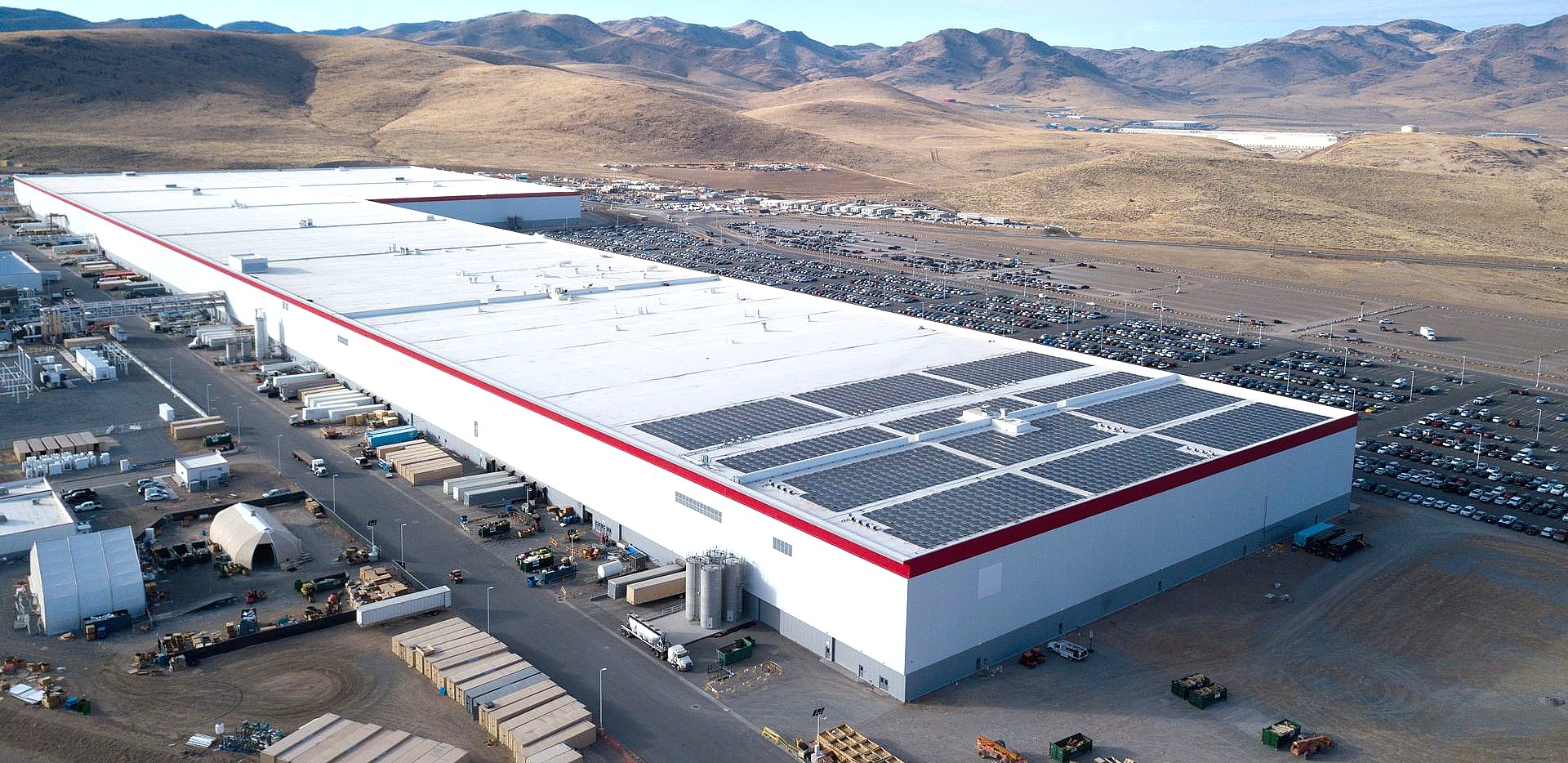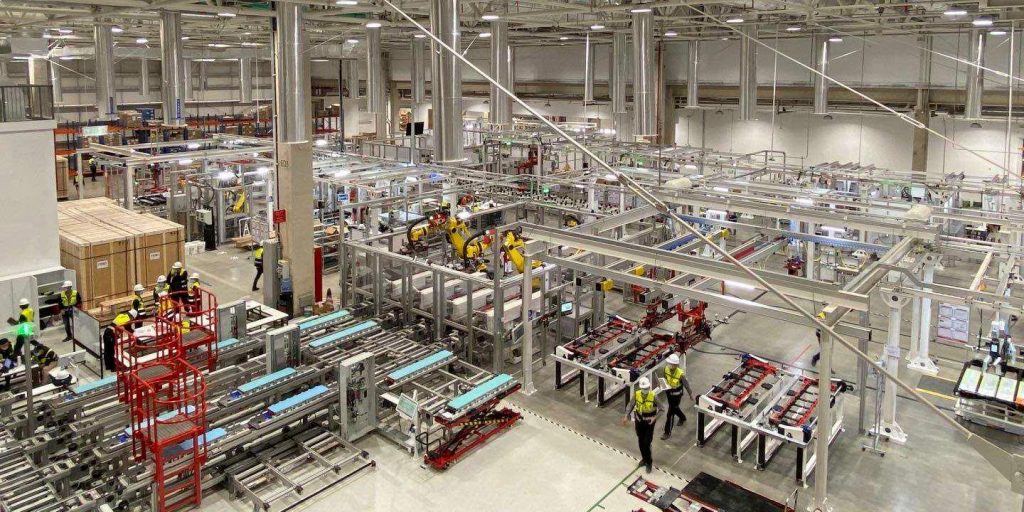

News
Tesla’s zero-cobalt battery goes beyond price parity, it’s a strike to gas cars’ jugular
It is no secret that Tesla is pursuing a million-mile battery. This battery will be so advanced, it would be able to stand the most stressful conditions for electric vehicles without compromising its quality and longevity; and when used for energy storage devices, it could last decades with regular use. If recent reports are any indication, it appears that Tesla’s million-mile battery could very well be the factor that would allow sustainable transportation to go for fossil fuels’ jugular.
One key factor that is still blocking the electric vehicle movement is the price of batteries. For the longest time, it has been widely speculated that reducing battery production costs to $100/kWh is the key to EVs reaching price parity with their petrol-powered counterparts. A recent report from Reuters, citing individuals familiar with Tesla’s battery efforts, has noted that the cost of Tesla’s batteries could fall even lower than $100/kWh.
Tesla is reportedly poised to start using batteries that it developed with China’s Contemporary Amperex Technology Ltd. (CATL) in the near future, with some reports speculating that the new cells could be rolled out to the Made-in-China Model 3 later this year. This battery, which will be cobalt-free, is reportedly a solid step towards a full rollout of Tesla’s million-mile battery. These batteries are still set to be improved as well, with the cells’ energy density and storage capacity being optimized over time.

Estimates indicate that CATL’s cobalt-free lithium iron phosphate battery packs for Tesla have fallen to $80/kWh, with the cost of the battery cells themselves dropping to about $60/kWh. Provided that these estimates are accurate, Tesla’s electric cars will not only be able to meet the $100/kWh target and meet price parity with gas powered cars, the company’s vehicles could actually become cheaper than their petrol-powered counterparts in the future.
Battery expert Shirley Meng, a professor at the University of California San Diego, noted that these costs, even for more expensive NMC cells, would drop even further when battery recycling comes into the picture. Fortunately for Tesla, there are signs that a serious effort to recycle batteries is underway. Reports indicate that the electric car maker is working steadily to recycle and recover key materials in its batteries, such as nickel, cobalt, and lithium.

Tesla’s efforts at recycling its batteries have been known for some time, considering the company’s focus on sustainability. These efforts are being pushed through Redwood Materials, a firm that’s focused on recovering vital battery components. Interestingly enough, Redwood Materials is headed by JB Straubel, a co-founder and longtime Chief Technology Officer of Tesla. Straubel is an authority in batteries, as evidenced by the fact that Elon Musk was already sponsoring his battery research even before both of them joined Tesla.
If Tesla can master battery recycling, and if it can reduce its battery costs to $80/kWh and below, the company’s electric vehicles could become even more competitive in the auto market. As it is, Teslas are still quite expensive compared to their gas-powered counterparts due to their batteries’ costs, and yet, some of the company’s vehicles like the Model 3 are already dominating established gas-powered cars like the BMW M3 on the market. One can only imagine how far Tesla could go with a vehicle like the Model Y, which caters to the hyper-popular crossover market, and a million-mile battery whose costs are down to less than $100/kWh.
With Teslas reaching or even exceeding price parity with gas powered rivals, there will be very little incentive for car buyers to purchase petrol-powered cars over electric vehicles. Premium EVs, after all, are cheaper to run, more powerful, and far cleaner. The million-mile battery may only be one of the things that Tesla is working on to optimize its vehicles, but it goes a long way towards the company’s fight for sustainability.

News
Tesla (TSLA) receives “Buy” rating and $551 PT from Canaccord Genuity
He also maintained a “Buy” rating for TSLA stock over the company’s improving long-term outlook, which is driven by autonomy and robotics.

Canaccord Genuity analyst George Gianarikas raised his Tesla (NASDAQ:TSLA) price target from $482 to $551. He also maintained a “Buy” rating for TSLA stock over the company’s improving long-term outlook, which is driven by autonomy and robotics.
The analyst’s updated note
Gianarikas lowered his 4Q25 delivery estimates but pointed to several positive factors in the Tesla story. He noted that EV adoption in emerging markets is gaining pace, and progress in FSD and the Robotaxi rollout in 2026 represent major upside drivers. Further progress in the Optimus program next year could also add more momentum for the electric vehicle maker.
“Overall, yes, 4Q25 delivery expectations are being revised lower. However, the reset in the US EV market is laying the groundwork for a more durable and attractive long-term demand environment.
“At the same time, EV penetration in emerging markets is accelerating, reinforcing Tesla’s potential multi‑year growth runway beyond the US. Global progress in FSD and the anticipated rollout of a larger robotaxi fleet in 2026 are increasingly important components of the Tesla equity story and could provide sentiment tailwinds,” the analyst wrote.
Tesla’s busy 2026
The upcoming year would be a busy one for Tesla, considering the company’s plans and targets. The autonomous two-seat Cybercab has been confirmed to start production sometime in Q2 2026, as per Elon Musk during the 2025 Annual Shareholder Meeting.
Apart from this, Tesla is also expected to unveil the next-generation Roadster on April 1, 2026. Tesla is also expected to start high-volume production of the Tesla Semi in Nevada next year.
Apart from vehicle launches, Tesla has expressed its intentions to significantly ramp the rollout of FSD to several regions worldwide, such as Europe. Plans are also underway to launch more Robotaxi networks in several more key areas across the United States.
News
Waymo sues Santa Monica over order to halt overnight charging sessions
In its complaint, Waymo argued that its self-driving cars’ operations do not constitute a public nuisance, and compliance with the city’s order would cause the company irreparable harm.

Waymo has filed a lawsuit against the City of Santa Monica in Los Angeles County Superior Court, seeking to block an order that requires the company to cease overnight charging at two facilities.
In its complaint, Waymo argued that its self-driving cars’ operations do not constitute a public nuisance, and compliance with the city’s order would cause the company irreparable harm.
Nuisance claims
As noted in a report from the Los Angeles Times, Waymo’s two charging sites at Euclid Street and Broadway have operated for about a year, supporting the company’s growing fleet with round-the-clock activity. Unfortunately, this has also resulted in residents in the area reportedly being unable to sleep due to incessant beeping from self-driving taxis that are moving in and out of the charging stations around the clock.
Frustrated residents have protested against the Waymos by blocking the vehicles’ paths, placing cones, and “stacking” cars to create backups. This has also resulted in multiple calls to the police.
Last month, the city issued an order to Waymo and its charging partner, Voltera, to cease overnight operations at the charging locations, stating that the self-driving vehicles’ activities at night were a public nuisance. A December 15 meeting yielded no agreement on mitigations like software rerouting. Waymo proposed changes, but the city reportedly insisted that nothing would satisfy the irate residents.
“We are disappointed that the City has chosen an adversarial path over a collaborative one. The City’s position has been to insist that no actions taken or proposed by Waymo would satisfy the complaining neighbors and therefore must be deemed insufficient,” a Waymo spokesperson stated.
Waymo pushes back
In its legal complaint, Waymo stated that its “activities at the Broadway Facilities do not constitute a public nuisance.” The company also noted that it “faces imminent and irreparable harm to its operations, employees, and customers” from the city’s order. The suit also stated that the city was fully aware that the Voltera charging sites would be operating around the clock to support Waymo’s self-driving taxis.
The company highlighted over one million trips in Santa Monica since launch, with more than 50,000 rides starting or ending there in November alone. Waymo also criticized the city for adopting a contentious strategy against businesses.
“The City of Santa Monica’s recent actions are inconsistent with its stated goal of attracting investment. At a time when the City faces a serious fiscal crisis, officials are choosing to obstruct properly permitted investment rather than fostering a ‘ready for business’ environment,” Waymo stated.
News
Tesla FSD v14.2.2 is getting rave reviews from drivers
So far, early testers have reported buttery-smooth drives with confident performance, even at night or on twisty roads.

Tesla Full Self-Driving (Supervised) v14.2.2 is receiving positive reviews from owners, with several drivers praising the build’s lack of hesitation during lane changes and its smoother decision-making, among others.
The update, which started rolling out on Monday, also adds features like dynamic arrival pin adjustment. So far, early testers have reported buttery-smooth drives with confident performance, even at night or on twisty roads.
Owners highlight major improvements
Longtime Tesla owner and FSD user @BLKMDL3 shared a detailed 10-hour impression of FSD v14.2.2, noting that the system exhibited “zero lane change hesitation” and “extremely refined” lane choices. He praised Mad Max mode’s performance, stellar parking in locations including ticket dispensers, and impressive canyon runs even in dark conditions.
Fellow FSD user Dan Burkland reported an hour of FSD v14.2.2’s nighttime driving with “zero hesitations” and “buttery smooth” confidence reminiscent of Robotaxi rides in areas such as Austin, Texas. Veteran FSD user Whole Mars Catalog also demonstrated voice navigation via Grok, while Tesla owner Devin Olsen completed a nearly two-hour drive with FSD v14.2.2 in heavy traffic and rain with strong performance.
Closer to unsupervised
FSD has been receiving rave reviews, even from Tesla’s competitors. Xpeng CEO He Xiaopeng, for one, offered fresh praise for FSD v14.2 after visiting Silicon Valley. Following extended test drives of Tesla vehicles running the latest FSD software, He stated that the system has made major strides, reinforcing his view that Tesla’s approach to autonomy is indeed the proper path towards autonomy.
According to He, Tesla’s FSD has evolved from a smooth Level 2 advanced driver assistance system into what he described as a “near-Level 4” experience in terms of capabilities. While acknowledging that areas of improvement are still present, the Xpeng CEO stated that FSD’s current iteration significantly surpasses last year’s capabilities. He also reiterated his belief that Tesla’s strategy of using the same autonomous software and hardware architecture across private vehicles and robotaxis is the right long-term approach, as it would allow users to bypass intermediate autonomy stages and move closer to Level 4 functionality.








